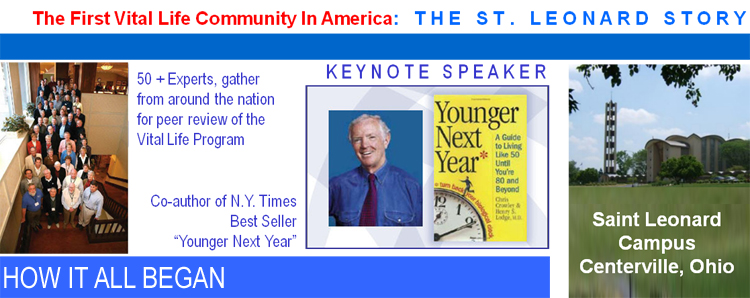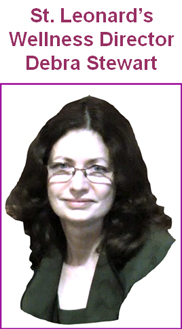



VIDEOS YOU CAN USE
Herein we offer you videos, templates and white papers as well as other elements that will help you to understand or reinforce the efficacy of the Vital Life Community Wellness Program.
Nothing is as important, however, as the crucible of reality, or real life experiences to help us evaluate the benefits of philosophies and programs. The test results emerge from the end user; why they decided to try the program, the results they had, benefits gained, lessons learned, and given the results, would they do it all over again.
During the second annual certification reviews, we had a series of chats with the CEO, and Wellness Director of America’s first certified and operational Vital Life Community. We begin with CEO, Tim Dressman, as he explains their Reason For Becoming a Vital Life Community, and his hope that by so doing it would help Protect The Waiting List that they had accrued.
Anytime a CEO makes a radical shift to the status quo of an organization, it is always somewhat of a gamble, even if the evidence and efficacy indicate that it is the right thing to do; because of the “human factor”. Can the organization adapt, will their methodology be successful, how long before measured results can validate the move, and how will the CEO KNOW for sure that he/she made the right move. Here, CEO Dressman shares with us that epiphany, the moment “When I Knew We Were Winning”!
The Vital Life Wellness Community Program requires the community to maintain a blog of their activities as a transparent report to their own internal community and to the world that indicates “how they are doing”. In the long run the broad view is all about sustainability; how do the Board of Trustees who have financial stewardship over the community and the marketing people, who have to present compelling evidence that the new lifestyle in their product approach is catching the attention of market locally, know that their efforts are paying off? Wellness Director, Debra Stewart talks about on-line interest as she discusses St. Leonard’s Blog Visits Worldwide.
We now know that the St. Leonard Vital Life Community Wellness Program metamorphosis is succeeding, but with any culture change, there are usually “doubters” and hesitancy regarding any change to the status quo in the start-up period. Tim Dressman talks about the very early days and Getting The Residents Acclimated to Change.
COST is always an issue no matter how effective the product; in a retirement community such as St. Leonard with a population, most of whom live on a fixed income, this is a key issue regarding any change to the status quo. It doesn’t matter that you may tell them they will save money in the long run by having lower healthcare costs. Residents often will tell you they don’t buy green bananas; they live in the here and now, and won’t pay more for future promises. This is why the key tenant of the Vital Life Community Wellness Program (VLCWP) is that it must be low cost/no cost, i.e., low cost initially, and no cost very quickly in order to be valuable. To accomplish this we considered the issue of added costs, with the need for the residents to have purpose, to be creative and continue to engage and lead; in fact to be in control of their days ahead. Tim Dressman discusses “No Cost Low Cost”.
Tim and Debra discuss the “Resident Creativity” in creating, leading, and enjoying their OWN programs, and as Debra indicates “We Utilized THEIR skills”.
Knowing “You Are Making A Difference” in the lives of individual residents rewards us; testimonials from adult children of the residents, related by CEO Dressman, one of them highlighted herein in this video clip link.
A key stimulus and THE unique aspect of VLCWP is the requirement for Measuring Results and publicly displaying the “Delta” or changes before and after an initiative. A key initiative for implementing the first major FITNESS initiative is the “SOCIAL WALKING PROGRAM, and the key to generating enthusiasm thus pulling in more participants, were the “Scoreboards” as Tim Dressman explains. (Public display of measurement)
One of the “selling points” given to the residents initially was the fact that St. Leonard was a Beta Vital Life Community, and the results that they could achieve, if significant, would have an impact to the rest of the world if their efforts and performance were significant. When we asked Debra Stewart if these stakes were important to the residents, she replied, “Absolutely - They Want Their (Wellness) Scores To Count”.
CHANGING THE RESIDENTS VIEW OF THEMSELVES
One of the most important statements to come out of this interview was Debra Stewarts’ comments, “When people believe what they hear (about elderly stereotypes) they tend to disengage, but if you give them a new message, that “you can do this”, and then make it manageable for them, so when they reach their threshold they will go further! I think it takes some knowledge about dimension, different skill levels and abilities and how to break it (the task) down into structured steps; then train the volunteers to take that approach too, so people are motivated and move on that. It is so easy to damage the human spirit when they are already challenged with illnesses, and with environmental issues such as not being in a familiar place, away from home, family and friends; just understanding that, being compassionate, and building a program for them that is “person centered” but also “relationship delivered” so that it’s a success; a win-win for everybody.
Another aspect unique to the VLCWP is the requirement that every effort is made to make it, not only an intergenerational endeavor, but to blur the once devisive lines of “roles” and location. This means having the program include residents, employees, members outside the community, but more importantly, in a CCRC, those living in the Independent Living, Assisted Living, and Skilled Care components so as to not stigmatize or institutionalize the participants by labels or abilities. Debra talks about one instance that reflects a true success of achieving these goals in the video clip entitled “Black Belts in Skilled Care”.
Adding the goal of inclusiveness and living beyond boundaries (property lines), Debra talks about how local college Students engage with the community’s residents.
Almost all CEO’s and Marketing personnel will tell you that the most often heard phrase from those inquiring about life in a CCRC or a retirement community is, “I am not ready yet”, indicating that this move, would signal for them, the end of their normal life as they now know it, beginning a phase of perpetual decline and loss of fun. Tim discuss how the phrase, “I am not ready yet” has been reversed in their VLCWP program to one of “I Am Ready Now”.
Those of you reading this web report and watching the videos may have more questions about the VLCWP and of course you can get in touch with us here at our e-mail address. If, however you would wish to talk directly with either Tim or Debra, when asked if they would entertain calls for a personal account or more information such that you could go back to your community and report, regarding the efficacy of practice, Tim offered, “We’ll Talk To Your Stakeholders” directly so they can learn more.
Come back to this section often as there will be continuing additions of resources we will be sharing with those of you interested in the program.